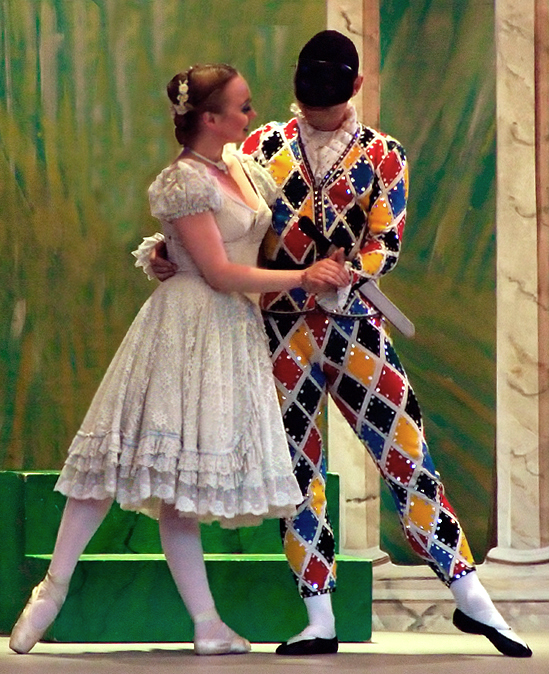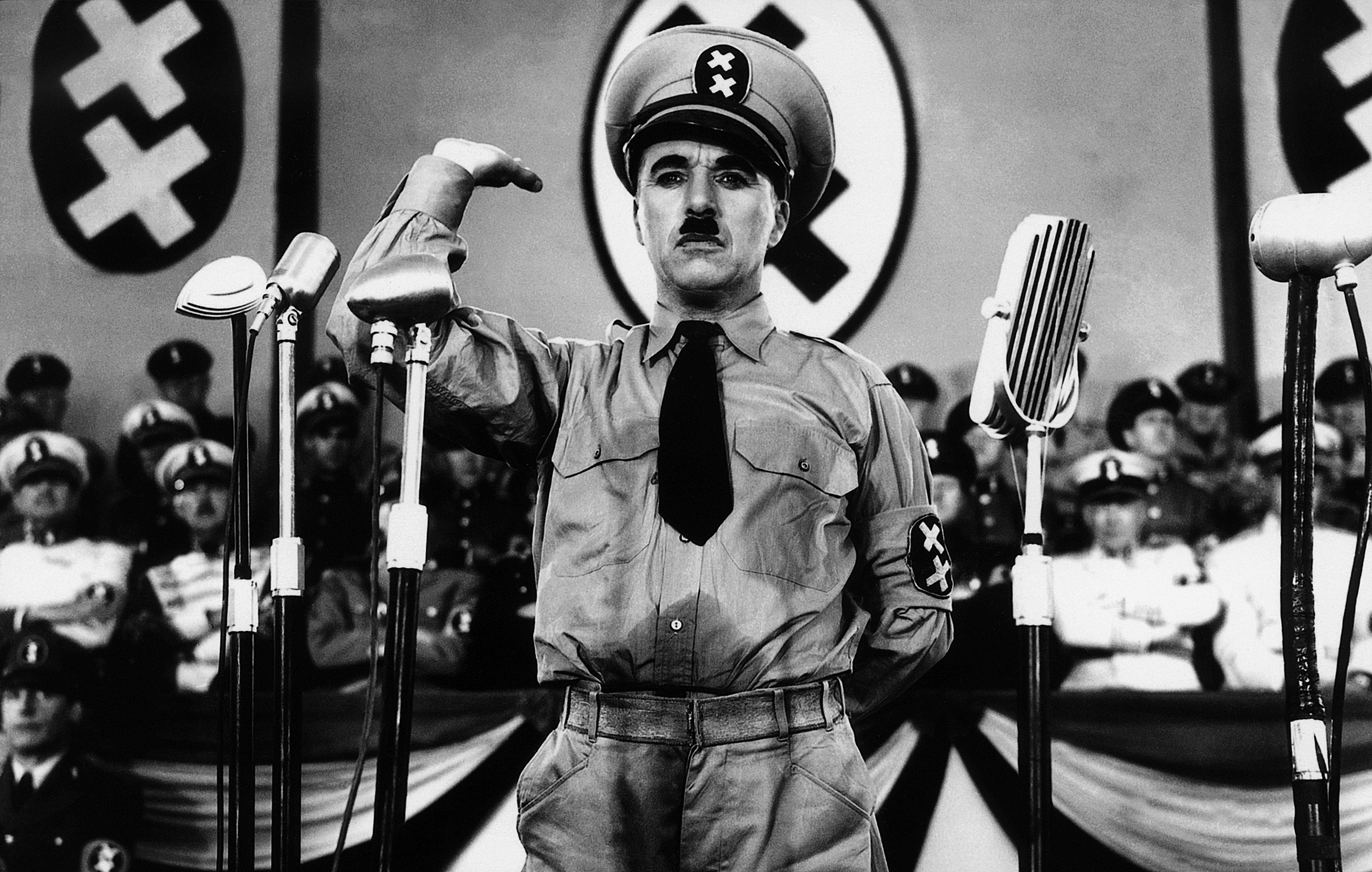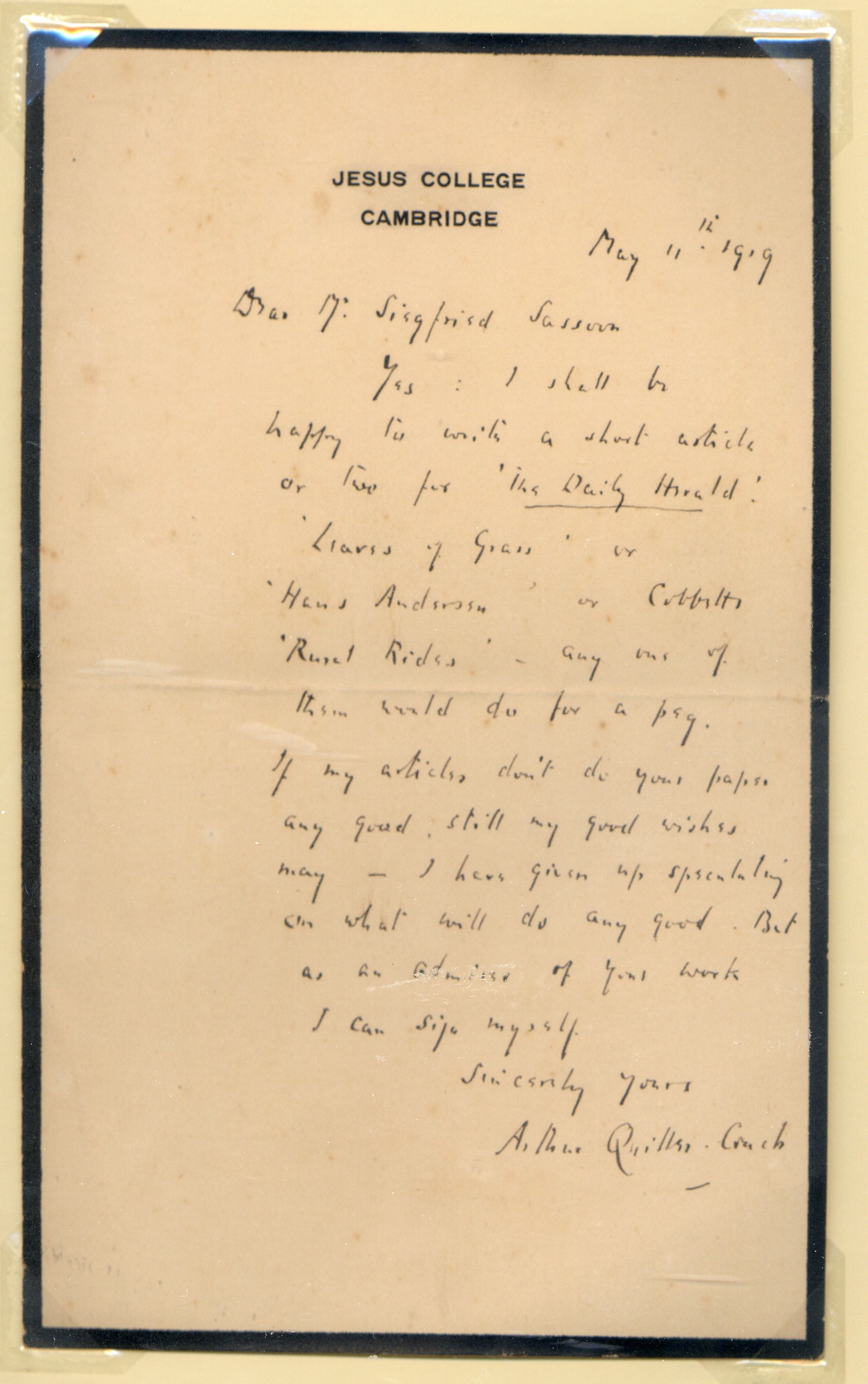|
The Tramp
The Tramp (''Charlot'' in several languages), also known as the Little Tramp, was English actor Charlie Chaplin's most memorable on-screen character and an icon in world cinema during the era of silent film. ''The Tramp'' is also the title of a silent film starring Chaplin, which Chaplin wrote and directed in 1915. The Tramp, as portrayed by Chaplin, is a childlike, bumbling but generally good-hearted character who is most famously portrayed as a vagrant who endeavours to behave with the manners and dignity of a gentleman despite his actual social status. However, while he is ready to take what paying work is available, he also uses his cunning to get what he needs to survive and escape the authority figures who will not tolerate his antics. Chaplin's films did not always portray the Tramp as a vagrant, however. The character ("The little fellow", as Chaplin called him) was rarely referred to by any names on-screen, although he was sometimes identified as "Charlie" and rarely, ... [...More Info...] [...Related Items...] OR: [Wikipedia] [Google] [Baidu] |
Stage Clothes
Stage clothes is a term for any clothes used by performers on stage. The term is sometimes used only for those clothes which are specially made for the stage performance by a costume designer or picked out by a costume coordinator. Theatrical costumes can help actors portray characters' age, gender role, profession, social class, personality, and even information about the historical period/era, geographic location, time of day, as well as the season or weather of the theatrical performance. Stage clothes may be used to portray a historical look or they can be used to exaggerate some aspect of a character. Description Any clothing used by performers (singers, actors, or dancers) on stage may be referred to as stage clothes. More specifically, the term is sometimes used only for those clothes which are specially made for the stage performance by a costume designer or picked out by a costume coordinator. However, many performers also pick up regular clothes and make them thei ... [...More Info...] [...Related Items...] OR: [Wikipedia] [Google] [Baidu] |
The Great Dictator
''The Great Dictator'' is a 1940 American anti-war political satire black comedy film written, directed, produced, scored by, and starring British comedian Charlie Chaplin, following the tradition of many of his other films. Having been the only Hollywood filmmaker to continue to make silent films well into the period of sound films, Chaplin made this his first true sound film. Chaplin's film advanced a stirring condemnation of Adolf Hitler, Benito Mussolini, fascism, antisemitism, and the Nazis. At the time of its first release, the United States was still formally at peace with Nazi Germany and neutral during what were the early days of World War II. Chaplin plays both leading roles: a ruthless fascist dictator and a persecuted Jewish barber. ''The Great Dictator'' was popular with audiences, becoming Chaplin's most commercially successful film. Modern critics have praised it as a historically significant film, one of the greatest comedy films ever made and an important wor ... [...More Info...] [...Related Items...] OR: [Wikipedia] [Google] [Baidu] |
A Woman (1915) Charlie Chaplin
A woman is an adult female human. Woman, A Woman, or The Woman may also refer to: Film * ''Woman'' (1918 film), an American silent film directed by Maurice Tourneur * ''Woman'' (1968 film), a three-part South Korean film * ''Woman'' (2019 film), a French documentary * ''A Woman'' (1915 film), an American silent film by Charlie Chaplin * ''A Woman'' (2010 film), an American-Italian drama by Giada Colagrande * ''The Woman'' (1915 film), an American drama silent film directed by George Melford * ''The Woman'' (2011 film), an American horror film directed by Lucky McKee Literature * ''Woman'' (Australian magazine), a women's magazine 1934–1954 * ''Woman'' (UK magazine), a women's weekly magazine since 1937 * ''The Woman'' (novel), a 2010 novel by Jack Ketchum and Lucky McKee Music Albums * ''Woman'' (BoA album) or the title song, 2018 * ''Woman'' (Burt Bacharach album) or the title song, 1979 * ''Woman'', by Himiko Kikuchi, 1983 * ''Woman'' (Jill Scott album), 2015 ... [...More Info...] [...Related Items...] OR: [Wikipedia] [Google] [Baidu] |
Gamine
A gamine is a slim, often boyish, elegant young woman who is, or is perceived to be, mischievous, teasing or sexually appealing. The word ''gamine'' is a French word, the feminine form of ''gamin'', originally meaning urchin, waif or playful, naughty child. It was used in English from about the mid-19th century (for example, by William Makepeace Thackeray in 1840 in one of his Parisian sketches), but in the 20th century, came to be applied in its more modern sense. Lexicography In 1997 the publisher HarperCollins drew up a list of 101 words – one a year – that defined the years 1896 to 1997. ''Gamine'' was chosen for 1899, being described by Philip Howard in ''The Times'' as follows: ''Gamine'' has been used particularly of such women in the performing arts or world of fashion. In that context, the closest English word – of Anglo-Norman origin – is probably "waif" (although "gamine" is often seen as conveying an additional sense of style and chic). For example, in ... [...More Info...] [...Related Items...] OR: [Wikipedia] [Google] [Baidu] |
Cocaine
Cocaine (from , from , ultimately from Quechuan languages, Quechua: ''kúka'') is a central nervous system (CNS) stimulant mainly recreational drug use, used recreationally for its euphoria, euphoric effects. It is primarily obtained from the leaves of two Coca species native to South America, ''Erythroxylum coca'' and ''Erythroxylum novogranatense''. After extraction from coca leaves and further processing into cocaine hydrochloride (powdered cocaine), the drug is often Insufflation (medicine), snorted, applied topical administration, topically to the mouth, or dissolved and injection (medicine), injected into a vein. It can also then be turned into free base form (crack cocaine), in which it can be heated until sublimated and then the vapours can be smoking, inhaled. Cocaine stimulates the mesolimbic pathway, reward pathway in the brain. Mental effects may include an euphoria, intense feeling of happiness, sexual arousal, psychosis, loss of contact with reality, or psychomo ... [...More Info...] [...Related Items...] OR: [Wikipedia] [Google] [Baidu] |
Red Flag (politics)
In politics, a red flag is predominantly a symbol of socialism, communism, Marxism, trade unions, left-wing politics, and historically of anarchism. It has been associated with left-wing politics since the French Revolution (1789–1799).Brink, Jan te''Robespierre and the Red Terror (1899). Socialists adopted the symbol during the Revolutions of 1848 and it became a symbol of communism as a result of its use by the Paris Commune of 1871. The flags of several socialist states, including China, Vietnam and former Soviet Union, are explicitly based on the original red flag. The red flag is also used as a symbol by some democratic socialists and social democrats, for example the League of Social Democrats of Hong Kong, the French Socialist Party and the Social Democratic Party of Germany. The Labour Party in Britain used it until the late 1980s. It was the inspiration for the socialist anthem, ''The Red Flag''. Prior to the French Revolution and in some contexts even today, red f ... [...More Info...] [...Related Items...] OR: [Wikipedia] [Google] [Baidu] |
The Bank (1915 Film)
''The Bank'' is a silent slapstick comedy. It was Charlie Chaplin's tenth film for Essanay Films. Released in 1915, it is a slight departure from the tramp character, as Charlie Chaplin plays a janitor in a bank. Edna Purviance plays the secretary on whom Charlie has a crush and dreams that she has fallen in love with him. Filmed at the Majestic Studio in Los Angeles. There doesn't appear to be any evidence that this film was received any differently from the bulk of Chaplin's early work, but today this film is often considered one of his best efforts during his Essanay period. Synopsis Charlie, feeling very important, enters the bank where he works. He descends to the vault and works its combination with great panache and opens the door. Charlie hangs his coat inside the vault and brings out his mop and bucket signifying he is the bank's janitor. He causes typical havoc with his mop and then with his broom. Charlie sweeps one room and the other janitor sweeps the adjacent ro ... [...More Info...] [...Related Items...] OR: [Wikipedia] [Google] [Baidu] |
Bowler Hat
The bowler hat, also known as a billycock, bob hat, bombín (Spanish) or derby (United States), is a hard felt hat with a rounded crown, originally created by the London hat-makers Thomas and William Bowler in 1849. It has traditionally been worn with semi-formal and informal attire. The bowler, a protective and durable hat style, was popular with the British, Irish, and American working classes during the second half of the 19th century, and later with the middle and upper classes in the United Kingdom, Ireland, and the east coast of the United States. Origins The bowler hat was designed in 1849 by the London hat-makers Thomas and William Bowler to fulfill an order placed by the company of hatters James Lock & Co. of St James's, which had been commissioned by a customer to design a close-fitting, low-crowned hat to protect gamekeepers from low-hanging branches while on horseback at Holkham Hall, the estate of Thomas Coke, 1st Earl of Leicester in Norfolk. The keepers had previ ... [...More Info...] [...Related Items...] OR: [Wikipedia] [Google] [Baidu] |
Chaplin The Kid 5
Chaplin may refer to: People * Charlie Chaplin (1889–1977), English comedy film actor and director * Chaplin (name), other people named Chaplin Films * '' Unknown Chaplin'' (1983) * ''Chaplin'' (film) (1992) * ''Chaplin'' (2011 film), Bengali film starring Rudranil Ghosh Stage musicals * ''Chaplin'' (1993 musical) (1993), a stage musical with music by Roger Anderson, lyrics by Lee Goldsmith and book by Ernest Kinoy * ''Chaplin'' (2006 musical) (2006), a musical with music and lyrics by Christopher Curtis and a book by Curtis and Thomas Meehan Places *Chaplin, Connecticut * Chaplin, Nelson County, Kentucky *Chaplin, West Virginia *Chaplin, Nova Scotia *Chaplin, Saskatchewan *Chaplin Lake Chaplin Lake is a salt lake in the south-west corner of the Canadian province of Saskatchewan. The lake is in the Prairie Pothole Region of North America, which extends throughout three Canadian provinces and five U.S. states, and within Pal ..., lake in Saskatchewan * Rural ... [...More Info...] [...Related Items...] OR: [Wikipedia] [Google] [Baidu] |
Illustrated Chips
''Illustrated Chips'' was a British comic magazine published between 26 July 1890 and 12 September 1953. Its publisher was the Amalgamated Press, run by Alfred Harmsworth. Priced at a half-penny, ''Illustrated Chips'' was among a number of Harmsworth publications that challenged the dominance in popularity of the "penny dreadfuls" among British children. After a brief initial run of six issues, ''Illustrated Chips'' was relaunched and ran for 2,997 issues. Harmsworth titles would enjoy a virtual monopoly of comics in the UK until the emergence of DC Thomson comics in the 1930s. In 1953 ''Illustrated Chips'' merged with ''Film Fun''. From May 1896 to the last issue in 1953 the cover page held a comic strip featuring the tramps Weary Willie and Tired Tim (initially named "Weary Waddles and Tired Timmy"). A reader of ''Illustrated Chips'' as a boy, the Weary Willie and Tired Tim characters helped inspire Charlie Chaplin to create his Little Tramp character. Weary Willie and T ... [...More Info...] [...Related Items...] OR: [Wikipedia] [Google] [Baidu] |
Daily Herald (UK Newspaper)
The ''Daily Herald'' was a British daily newspaper, published in London from 1912 to 1964 (although it was weekly during the First World War). It was published in the interest of the labour movement and supported the Labour Party. It underwent several changes of management before ceasing publication in 1964, when it was relaunched as '' The Sun'', in its pre-Murdoch form. Origins In December 1910 the printers' union, the London Society of Compositors (LSC), became engaged in an industrial struggle to establish a 48-hour workweek and started a daily strike bulletin called ''The World''. Will Dyson, an Australian artist in London, contributed a cartoon. From 25 January 1911 it was renamed the ''Daily Herald'' and was published until the end of the strike in April 1911. At its peak it had daily sales of 25,000. Ben Tillett, the dockers' leader, and other radical trade unionists were inspired to raise funds for a permanent labour movement daily, to compete with the newspa ... [...More Info...] [...Related Items...] OR: [Wikipedia] [Google] [Baidu] |






